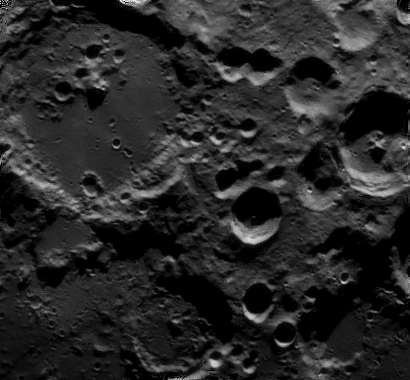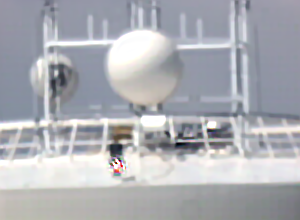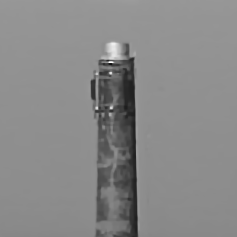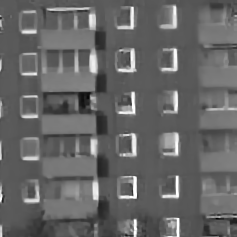|
|
|
|
||||
|
|
|
|||||
|
|
Removing Atmospheric Turbulence Xiang Zhu and Peyman Milanfar |
|
||||
|
|
Abstract To correct geometric distortion
and reduce space and time-varying blur, a new approach is proposed in this
paper capable of restoring a single high-quality image from a given image
sequence distorted by atmospheric turbulence. This approach reduces the space
and time-varying deblurring problem to a shift
invariant one. It first registers each frame to suppress geometric
deformation through B-spline based non-rigid
registration. Next, a temporal regression process is carried out to produce
an image from the registered frames, which can be viewed as being convolved
with a space invariant
near-diffraction-limited blur. Finally, a blind deconvolution
algorithm is implemented to deblur the fused image,
generating a final output. Experiments using real data illustrate that this
approach can effectively alleviate blur and distortions, recover details of
the scene and significantly improve visual quality. Related Papers X. Zhu and P. Milanfar, "Removing Atmospheric Turbulence via Space-Invariant Deconvolution", Accepted to IEEE Trans. on Pattern Analysis and Machine Intelligence, DOI: 10.1109/TPAMI.2012.82. X. Zhu and P. Milanfar, "Stabilizing and Deblurring Atmospheric Turbulence", International Conference on Computational Photography (ICCP), Pittsburgh, PA, April 2011. See related talk. Restoration Framework |
|
||||
|
|
|
|
||||
|
|
Experimental Results |
|
||||
|
|
1. Moon Surface (410x380x80). This video is taken from a ground-based telescope.
Observed video Registered Video
Please place your mouse over the links to show the corresponding image on the left pane. You do not need to click the links. The default image shown is the result obtained from our method. |
|
||||
|
|
2. Water Tower (300x220x80). Top part of a water tower located above the ground, imaged at a (horizontal) distance of 2.4 kilometers.
Observed Video Registered Video
|
|
||||
|
|
3. Chimney (237x237x100). This video is captured through hot air exhausted by a building's vent.
Observed video Registered Video
|
|
||||
|
|
4. Building (237x237x100). This video is captured through hot air exhausted by a building's vent.
Observed video Registered Video
|
|
||||
|
|
Acknowledgements
We would like to thank Prof. Mikhail A. Vorontsov from the Intelligent Optics Lab of the University
of Maryland for allowing us to use the video data Water Tower, and thank Mr. Faisal A. Salem from University
of Michigan and Dr. Joseph M. Zawodny from NASA Langley Research Center for providing us with the video Moon
Surface. We also thank Mr. M. Hirsch and Dr. S. Harmeling from Max Plank Institute for Biological Cybernetics
for sharing with us the sequences Chimney and Building.
|
|
||||
|
|
|
|
||||
|
|
|
|
||||
|
|
|
|
||||
|
|
|
|
||||





